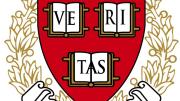The University this afternoon released its tax return for nonprofit organizations (Form 990) for 2013, covering the tax year from July 1, 2013, to June 30, 2014 (which represents Harvard’s fiscal year 2014). As is its practice, Harvard has simultaneously disseminated information on the compensation paid to Jane L. Mendillo, then president and chief executive officer of Harvard Management Company (HMC, which is responsible for investing the endowment) and to its highest-paid portfolio managers. The tax filing discloses compensation for other University officials as well, including President Drew Faust. (As noted in May 2010, the basis for such reporting has changed, so the HMC information just released covers calendar year 2013).
Thus, the newly released HMC compensation figures, reflecting annual incentive pay disbursed once each year, span the second half of fiscal 2013 (a year when the rate of investment return was 11.3 percent, and the endowment as a whole increased in value by $2.0 billion, to its reported value, as of June 30, 2013, of $32.7 billion, after taking into account both distributions to support Harvard operations and new endowment gifts received) and the first half of fiscal 2014 (a year when the rate of investment return was 15.4 percent, and the endowment increased in value by $3.7 billion, to its reported value of $36.4 billion as of June 30, 2014). The earlier articles linked above provide investment returns by asset class for those reporting periods.
For calendar 2013, HMC reported these total-compensation sums for Mendillo and the five most highly compensated portfolio managers; where the same people were among the most highly compensated HMC personnel in calendar year 2012 (reported last May), that year’s compensation is also shown (in parentheses):
- Jane L. Mendillo, president and CEO: $9.6 million ($4.8 million)
- Stephen Blyth, head of public markets: $11.5 million ($5.3 million)
- Alvaro Aguirre-Simunovic, natural-resources portfolio manager: $9.6 million ($6.6 million)
- Andrew G. Wiltshire, head of alternative assets: $8.5 million ($7.9 million)
- Daniel Cummings, real-estate portfolio manager: $5.4 million ($4.2 million)
- Marco Barrozo, fixed-income portfolio manager: $4.8 million
HMC’s formula provides a base salary, with the large majority (HMC has in the past said “over 90 percent”) of bonus compensation varying with investment managers’ performance. Those variable awards depend on producing investment returns in excess of market benchmarks for the specific category of assets, and sustaining that performance over time: subsequent underperformance results in variable compensation being “clawed back.” Thus, the variable awards in any annual period reflect results over multiple years.
As reported, Mendillo stepped down from HMC at the end of 2014. Blyth’s compensation, shown above, based on performance of the endowment’s public portfolios—about 40 percent of managed assets—may have been a harbinger of things to come: his appointment as president and CEO was announced last September. As previously reported, although HMC’s investment results have exceeded market benchmarks in recent years, they have trailed those of other large university endowments with highly diversified investment portfolios. The public assets overseen by Blyth’s team—stocks and fixed-income instruments—have generally outperformed their market benchmarks; results have been less satisfactory in the private-equity portfolio, typically a mainstay for endowments like Harvard’s.
Administrative Pay
President Drew Faust’s salary for the fiscal year reported in the tax filing was $785,000—up slightly from the $771,000 reported for the prior year—plus other compensation of $328,000 (up from $270,000). Her total compensation reported on Schedule J, including retirement and other deferred benefits ($183,000) and nontaxable benefits ($145,000, principally associated with the president’s official residence, Elmwood), was shown as $1,112,149. (Separately, her compensation for service on the board of directors of Staples, Inc., reported in its proxy statement, was the standard cash fee for each board member of $75,000, plus stock awards of $175,000—unchanged from the prior year.)
Excluding the figures for other compensation, provost Alan Garber’s salary was $622,000; other reported salaries, for the executive vice president and various vice presidents, ranged from $616,000 to $288,000. The highest decanal salary reported was Harvard Medical School’s Jeffrey S. Flier, at $584,000.









